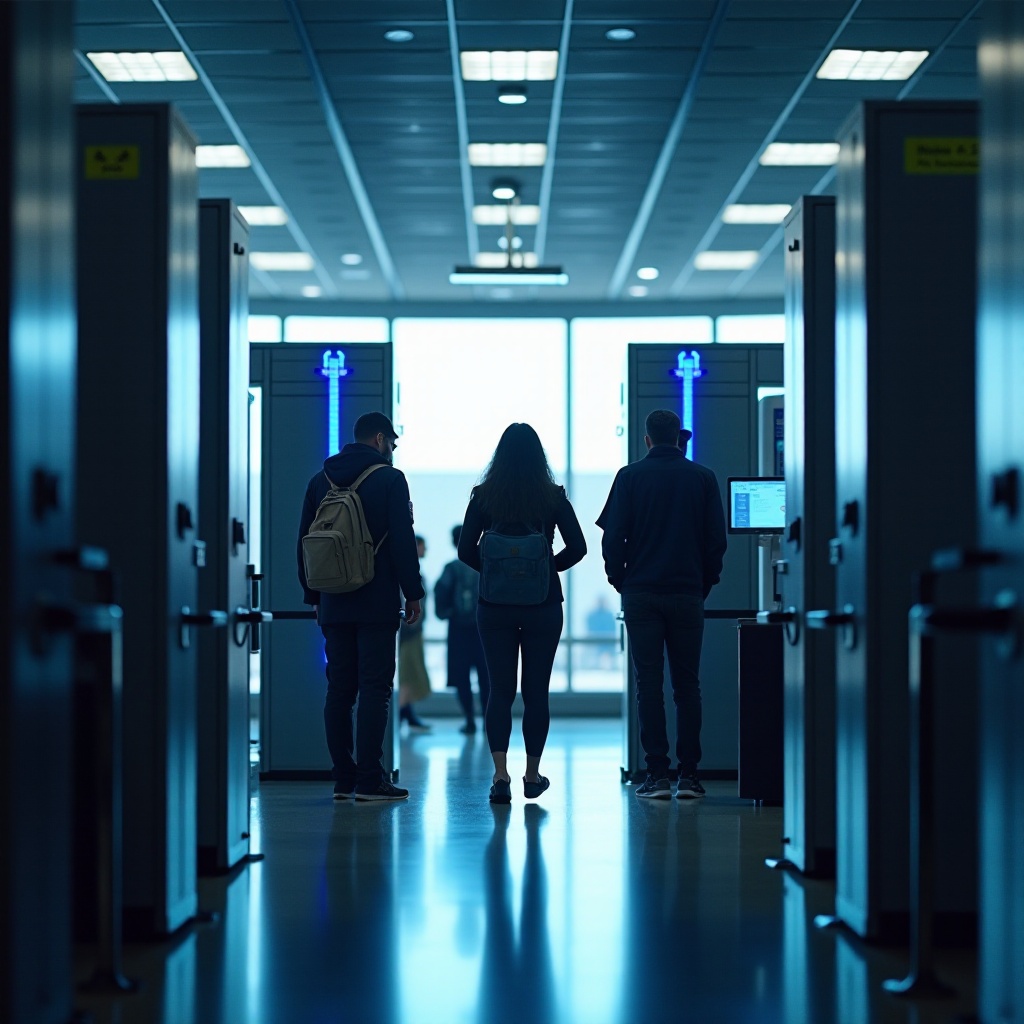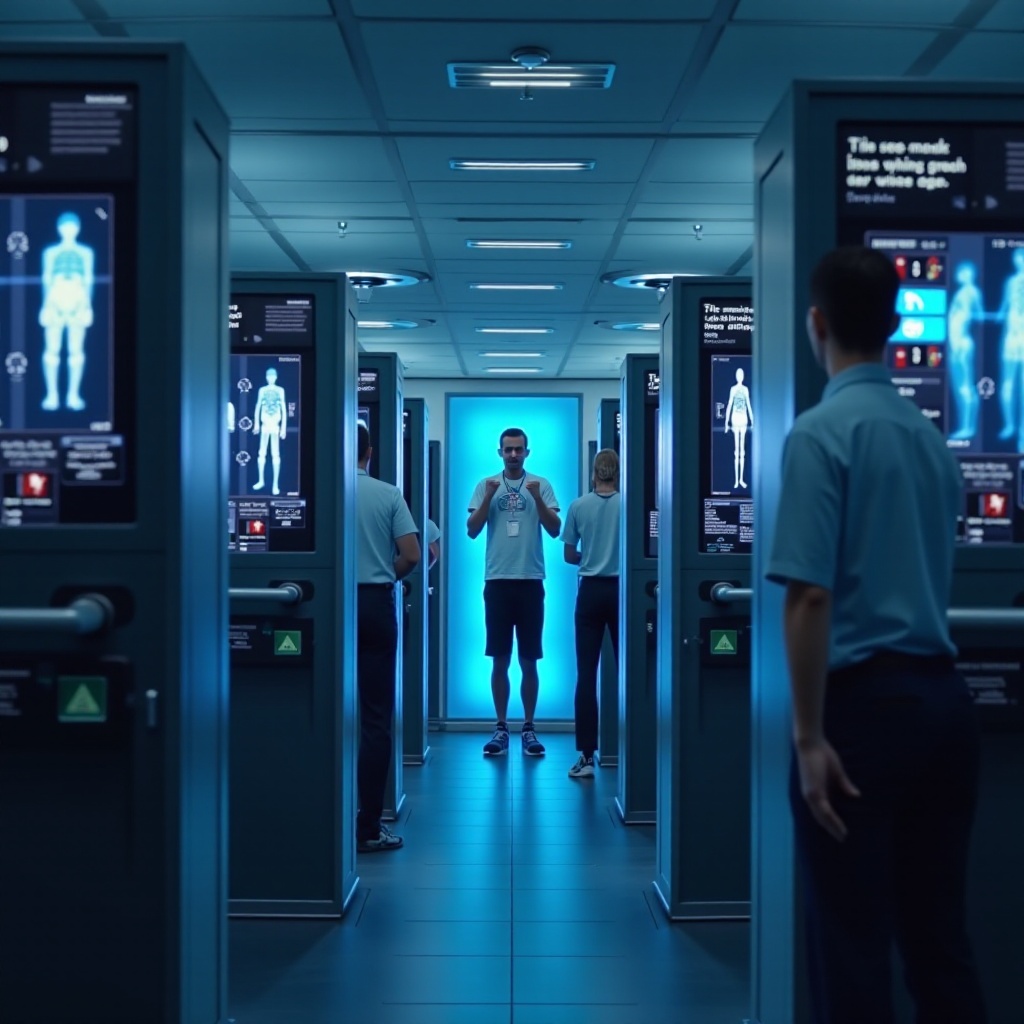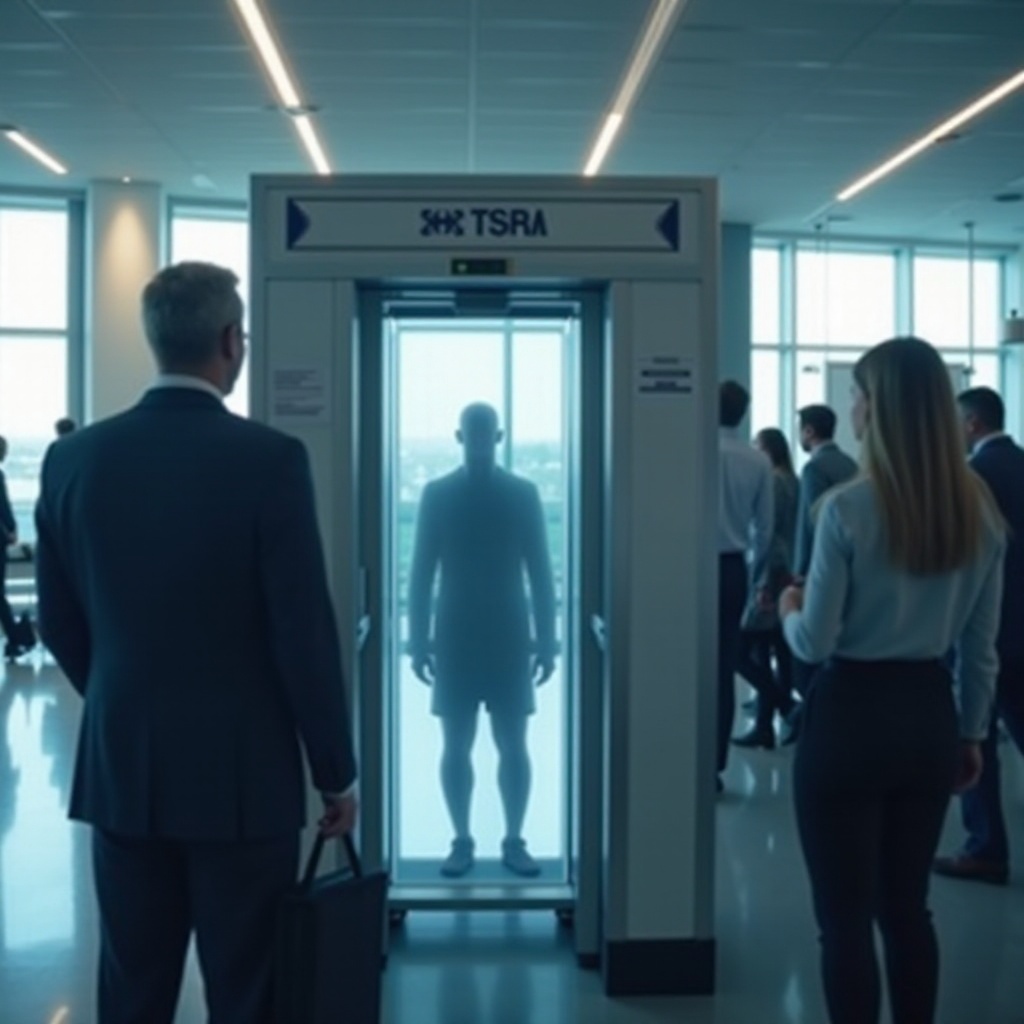Introduction
Traveling by air involves several security checks, one of the most notable being the TSA scanners at airport security checkpoints. These scanners are designed to ensure that all passengers and their belongings are safe. But they also raise important questions about privacy, health, and safety. One question that particularly stands out is: can these scanners see inside your body? To answer this, we need to understand how these scanners work, what they detect, and if they pose any risks to frequent travelers.

Types of TSA Scanners
TSA scanners are mainly of two types: Millimeter Wave Scanners and Backscatter X-ray Scanners.
-
Millimeter Wave Scanners: These scanners use low-energy millimeter waves to detect potential threats. They are the most commonly used type in US airports. The waves bounce off the body’s surface, producing a generic image that shows concealed objects without revealing anatomical details.
-
Backscatter X-ray Scanners: Although less common now, these scanners use X-rays to produce an image of the body’s surface. They are more controversial due to the use of ionizing radiation, which is why many airports have phased them out in favor of millimeter wave scanners.
Understanding the type of scanner gives insight into how they protect privacy and what they are capable of detecting.
How TSA Scanners Work
Millimeter wave scanners emit non-ionizing radiofrequency waves around the body. As the waves bounce back, they create a generic, human-shaped image that highlights any concealed items. These images are analyzed in real-time by software designed to detect unusual shapes or objects.
Backscatter X-ray scanners, on the other hand, create images by scanning low-level X-rays across the body’s surface. The X-rays reflect back, creating a detailed image that shows both the body and any hidden objects.
While the technologies differ, both aim to detect potential threats without compromising too much on privacy. This brings us to the important question of what exactly these scanners can see and detect.

What TSA Scanners Can Detect
-
Metal Objects: TSA scanners are proficient at detecting hidden weapons like guns or knives, and smaller items like metal pins or screws.
-
Non-Metal Objects: These scanners also can detect non-metal items such as explosives or plastic weapons, thanks to their ability to outline an object’s shape and density.
-
Liquids and Gels: Restrictions on carrying liquids are well-known, and scanners are calibrated to identify prohibited liquid volumes hidden on one’s body.
Overall, while TSA scanners are designed to detect threats, their ability to see inside your body is quite limited. They focus primarily on what is on the body’s surface, respecting certain privacy constraints.

Addressing Privacy Concerns
Privacy concerns are among the most significant issues addressed by TSA scanner technology. Images created by millimeter wave scanners are neither detailed nor stored. These scanners show a vague outline of the body rather than anatomical features. The software automatically highlights items detected without human intervention.
Additionally, privacy enhancements like Automated Target Recognition (ATR) software mean that only generic outlines are displayed, and items of concern are marked for further inspection.
Moreover, TSA policies state that images are immediately deleted after review. Security personnel do not see passengers’ private parts, ensuring privacy is maintained.
Health and Safety of TSA Scanners
Another pressing issue is the health and safety of these scanners. Millimeter wave scanners use non-ionizing radiation, which does not have enough energy to damage cells or DNA. Health organizations, including the Food and Drug Administration (FDA), have declared them safe for all travelers, including pregnant women.
Backscatter scanners use a minimal amount of ionizing radiation. Although they are regarded as safe for infrequent use, accumulation of radiation exposure over time raised concerns, leading to their reduced operation in favor of safer alternatives.
Frequent travelers need not worry as the radiation doses—even from the older backscatter machines—are minimal. Walking through a scanner is considerably less harmful than a transatlantic flight’s natural radiation exposure.
The Role of TSA Agents with Scanners
TSA agents play a crucial role in ensuring security at airports. They operate the scanners, manage the resulting data, and conduct additional screenings if an anomaly is detected. Their role is both to ensure effective security while respecting passengers’ privacy and dignity.
When an alert is raised, a TSA agent will conduct a targeted pat-down, which is performed by an agent of the same gender. This step is kept as professional and minimally invasive as possible.
Conclusion
Understanding TSA scanners can ease the anxiety of passing through airport security checkpoints. These scanners are adept at detecting potential threats without compromising too much on privacy and health. While TSA scanners may outline objects on the body’s surface, they do not see inside the body, ensuring a balance between security and personal privacy.
Frequently Asked Questions
Can TSA scanners see inside your body?
No, TSA scanners cannot see inside your body. They only capture objects on the surface and do not reveal anatomical features.
Are TSA scanners safe for frequent travelers?
Yes, TSA scanners, especially millimeter wave scanners, emit low-energy waves that are considered safe for frequent use by health authorities.
What should I do if I have medical implants?
If you have medical implants, inform the TSA agent before screening. Scanners are designed to take such implants into account, reducing the likelihood of false alarms.
